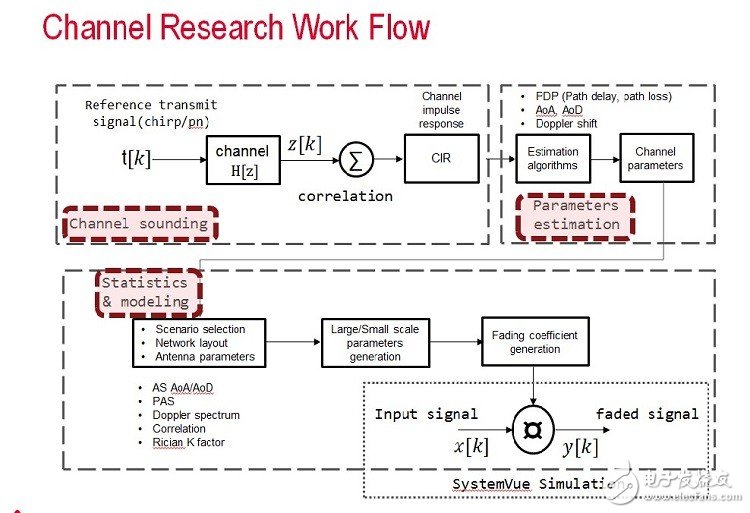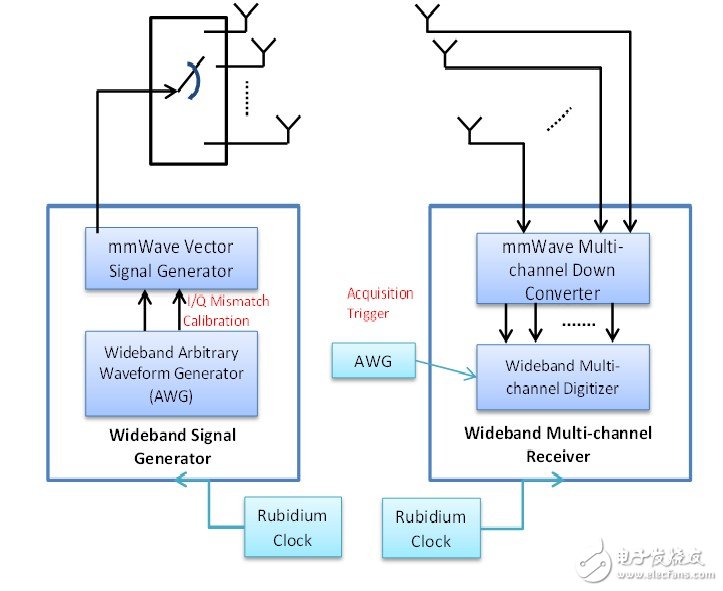Characterization of the 5G millimeter wave interface is not easy, and many new challenges are encountered in the process. This article explores some of the challenges and considerations to help engineers easily face these challenges.
5G has many challenging goals – including increasing network capacity, increasing peak data rates, and making mobile communication services more reliable. Some of these goals need to increase today's performance by a factor of 10, 100, or 1,000, which is not possible with existing spectrum below 6 GHz. Therefore, researchers must study new wireless interfaces in frequencies up to 100 GHz centimeter (cm) and millimeter (mmWave).
In order to characterize the millimeter-wave frequencies of radio frequency (RF) channels, engineers face many new challenges that have never been seen before. This article explores some of the challenges and considerations to help engineers easily face these challenges.
In order to develop new wireless interface standards, researchers must be able to evaluate the characteristics of the RF channel to understand how RF signals are transmitted through the channel. Researchers currently use channel-detection techniques to collect "channel impulse response" (CIR) data in order to extract channel parameters using channel parameter estimation algorithms, and then use the extracted data for the construction of new channel models, as shown in Figure 1. Show.
Channel detection and measurement systems can be divided into different types, from simple to complex, depending on the estimated parameters. When measuring time-varying (TIme-varying) channels that support multipath propagation, you must understand the complex impulse response with time and phase information. In addition, the ability to replicate or verify measurements using different measurement systems under similar conditions is a major challenge.

Figure 1: The model of the wireless transmission channel is composed of channel sounding, channel parameter estimation, and statistics.
Important technical challenges include:
· Signal generation and analysis at millimeter wave frequency with more than 500MHz bandwidth and multi-channel support
· Data capture and storage
· Channel parameter estimation
· Calibration and synchronization
The next discussion will discuss some important considerations that will help meet these challenges.
Signal generation and analysisIn order to meet the user's high bandwidth requirements for 5G, the wireless interface standard will cover millimeter wave frequencies up to 100 GHz, bandwidths from 500 MHz to 2 GHz, and support multiple channels. In this case, researchers need to consider a lot of factors, and there is a need for a highly efficient channel detection system.
These measurement systems must meet the aforementioned core requirements and provide repeatable measurements. Important system components include wideband digital-to-analog converters (DACs) based on fundamental frequency arbitrary waveform generators (AWGs) and analog-to-digital converters (ADCs) that can be used as wideband digitizers or oscilloscopes to support the required bandwidth, It also has a resolution that is sufficient to support the dynamic range required to capture the signal.
Similarly, since the 5G standard has not yet been developed, test equipment should be fairly flexible so that it can be configured or reconfigured as test requirements and standards evolve.
Data capture and storageWhen collecting raw data through a multi-channel broadband measurement system, an 8-channel, 1 GHz bandwidth measurement can consume up to several Gigabytes of data in just one second, and quickly plug the disk drive. burst. Not only that, but researchers must also take the ADC data and store it in a storage device. It is simply impossible to get data in real time and stream it. The only thing that is happy is the disk drive manufacturers because they can sell more storage devices, but this method is not feasible.
In addition, consider using two methods to reduce the amount of data collected:
· If the probe signal is less than one transmission cycle, only valid data can be retrieved, or only the data required to perform the CIR calculation can be retrieved. This approach can significantly reduce the amount of data that needs to be collected.
· Next, the built-in real-time auto-association and signal processing functions can be used to measure the bandwidth to generate valid CIR data within the measurement system. At this point, you only need to store the CIR results, which can save a lot of storage space and accelerate the provision of CIR results.
Channel parameter estimationAs of now, most of the research has been done in a single channel. The MIMO channel introduces the concept of space and association, thus leading to the main problem of estimating spatial parameters. For example, researchers need to estimate parameters such as angle of arrival (AoA), exit angle (AoD), and extended angle (AS). Currently available channel parameter estimation algorithms include beamforming, subspace, and Maximum Likelihood (ML).
For consistency, coherence, and estimation performance, the ML estimation algorithm is an efficient MIMO channel parameter estimation method. Among them, the SAGE algorithm with low computational complexity (based on maximum likelihood) is most popular among researchers.
Calibration and synchronizationVerification and synchronization are far more important than achieving accurate, repeatable results. Synchronization of the transmitter and receiver subsystems can be achieved by using two chirp frequencies to provide a stable, highly accurate 10 MHz synchronization reference frequency for the transmitter and receiver, as shown in Figure 2. In addition, the detection and generation of the excitation signal must be synchronized through the trigger.
When constructing the millimeter-wave measurement system shown in Figure 2, the benefits of verification must be considered:
• System verification, also known as “back-to-back†verification, connects the transmitter to the receiver to align the frequency reference with the system frequency to obtain accurate amplitude, phase, and arrival time estimates.
· The differential IQ output of the fundamental AWG may have timing, gain, and quadrature error, which can affect signal quality. The IQ mismatch check corrects the imbalance between the in-phase and quadrature phase signals of the AWG output.
• Multi-channel, wideband digitizers or oscilloscopes may have time and phase variations between channels, which will affect the measurement results. You can measure the overall channel frequency deviation in a variety of ways. One method is to measure the amplitude and phase difference of each channel over a large frequency range and apply a wideband correction filter.
· Antenna and power calibration must also be considered. You can check the antenna manufacturer's calibration data. If not provided, the antenna array phase field type measurement can be performed in the microwave test chamber and compared with the theoretical performance of the antenna array.

Figure 2: This measurement system includes a chirp frequency for accurate Tx and Rx synchronization, and a capture trigger that keeps signal generation consistent with data acquisition.
ConclusionIn short, it is not easy to analyze the characteristics of the new 5G millimeter wave interface, and many new challenges will be encountered in the process. In order to analyze time-varying channels that support multipath propagation, complex measurement systems must be used, including test equipment that supports millimeter-wave, wide-band signals, and multiple channels; comprehensive verification; and synchronization to take advantage of effective channels The parameter estimation algorithm performs real and accurate channel model characterization to obtain accurate and repeatable measurements.
Zhejiang Baishili Battery Technology Service Co,.Ltd. , https://www.bslbatteryservice.com